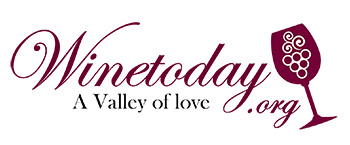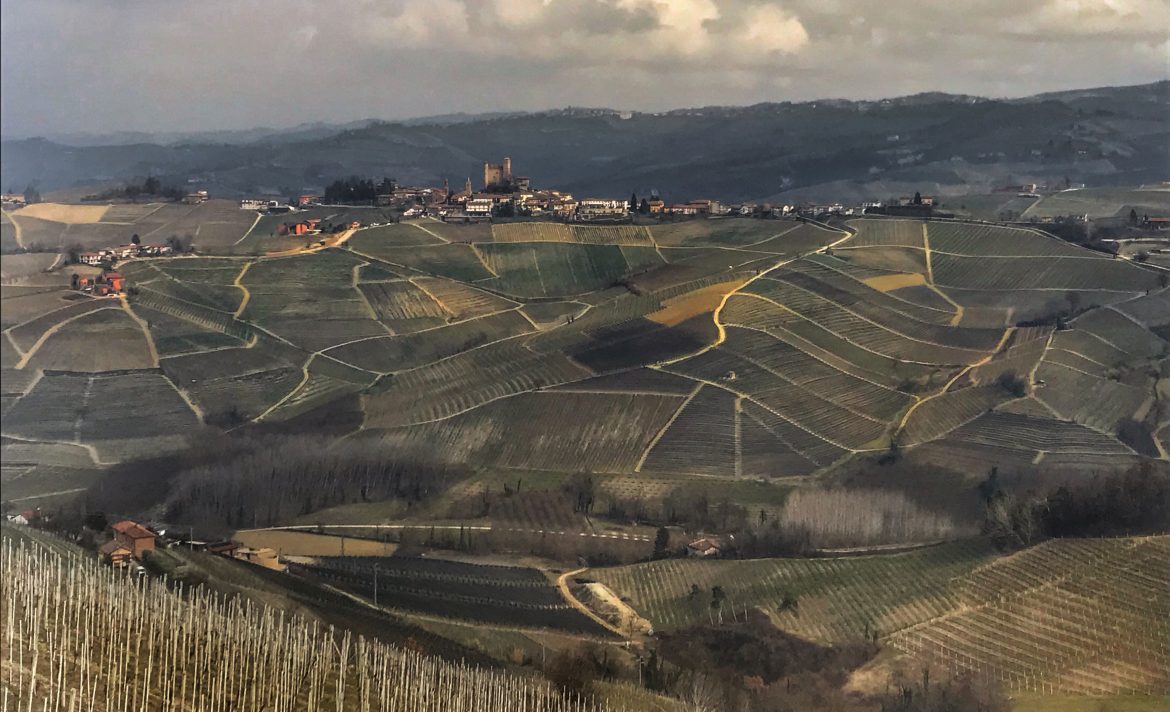This unusual and rare grape variety arrived in the Langhe (Piemonte region Italy) at the end of the nineteenth century to then be abandoned and recovered in the mid -70s in old vineyards in the magnificent municipality of Monforte d’Alba, one of the important areas of the winemaking of Barolo Docg. Even if the Rossese Bianco (White), a white berry grape variety, which tends to mature between the end of September and the early October is originally from the Cinque Terre, Liguria region, but since its presence has been certified for a long time in the Langa territory, is recognized as Piedmontese autochthonous variety, so much so that the wine produced with its grapes in 2011 has earned the denomination of controlled origin Langhe Rossese Bianco.
The white Rossese owes its name to the intense amber shade, often pinkish, of the well -matured grape exposed to the sun. There are other homonyms of this grape variety both in the Liguria of “Levante” and of the “Ponente”, but there are not always phenological similarity with the white Rossese of the Langhe.
Some time ago during one of my many presences at international events in the wine sector I had the opportunity to meet again Mauro Manzone, oenologist, fifth generation of the homonymous historic cellar of Monforte D’Alba Manzone Giovanni. Mauro was the first to introduce me to the history of this vine and wine with such passion, first letting me recognize its deep and intriguing primary scents and then inviting me to the cellar where his sister Mirella welcomed me.
Mirella and Mauro explain to me that today there are only five wineries that produce the Langhe Rossese Bianco Doc and that the grapes of their so particular wine come from two single vineyards: in the MGA (cru) of Castelletto and in the MGA (cru) of Gramolere (Where above all Nebbiolo grapes are grown for the vinification of an exceptional Barolo Docg) in the municipality of Monforte D’Alba.

Municipality particularly dear to me as the land where my grandfather Attilio rests in peace.
After placing two bottles of Langhe Rossese Bianco Doc and two glasses in front of me in the tasting room, Mauro partially fills the latter and while breathing oxygen he explains to me that the original nucleus of the vineyard dates back to 1982 and a more recent plant, with east-north-east exposure it was built in 2011. Sandy limestone soil with layers of red clay, the considerable slope of the hill means that all the work is done manually.
Mirella: «The grapes are harvested by hand at the end of September and beginning of October to guarantee a noble maturation of the skins and seeds».
Mauro: «A brief maceration is carried out on the skins before pressing, then the spontaneous and slow fermentation starts for about 30 days in steel vats and after the necessary refinement in tonneaux and batonnage with the fine lees, the wine is bottled in the falling moon».

I remember my grandfather Jo, a farmer and very small producer at the gates of the Langa, when at a very young age he accompanied me to the cellar during the harvest, explaining to me that, by tradition, the wine is bottled following the phases of the moon: «during the waxing moon, during the first fourth, to obtain sparkling wines while in the last quarter, or in the phase of the waning moon, wines with long aging and sweet wines, while with the full moon any type of wine can be bottled».
Therefore it is easy to assume that it is bottled during the waning moon due to its characteristic of being a long-lived white wine with an average life ranging from ten to fifteen years.

Mirella: «It is put on the market about two years after the harvest with the production of a few thousand bottles».
I bring the glass to my nose: I immediately perceive a light and fresh balsamic note; orange peel and cedar, which somehow closing my eyes take me back to the Cinque Terre; acacia flowers; broom.
I slightly bend the goblet letting it be pierced by one of the last rays of the dying sun coming from the opposite window, its straw yellow color with an almost brilliant golden hue.
Soft, full flavour, with hints of yellow melon and peach, excellent final persistence.
Right from the start I form my own idea about the pairings but even before the appropriate ones come out of my mouth, «You should try it paired with shellfish and fish but also with white meats and cheeses» Mauro seeing me thoughtfully.
With these last words of his given the time, dinner is approaching, I hear a slight grumbling…
In my opinion an exceptional wine also as an aperitif.

Some time ago, during one of my visits to Langa (Piemonte region Italy), I had the opportunity to taste the Langhe Rossese Bianco Doc 2021 of another winery, La Bioca located in Serralunga d’Alba with a five -month -old steel aging; I still remember his hints of citrus fruits, pear Williams, hawthorn. Olga, the brand manager, explains to me: «We started producing this particular white wine since 2017 in the Monforte municipality». A small production, only 4,000 bottles per year. «We particularly care about this grape variety as it gives a very interesting wine, our winery loves to work with historical vines. It is 85% produced with Rossese Bianco grape and Manzoni crossroads 15%».
Manual collection in cassettes with a guyot breeding system, soft branching and pressing without maceration.

Also interesting is the one produced by Cascina Amalia, born in 2003 with a refinement half of steel and half with its fucce in French oak barrique for about 12 months, with periodicals Batonnage to put the yeasts back in suspension. I have been particularly impressed and beyond by its typical primary hints, from the secondary ones where they favor light notes of vanilla with almond aftertaste.
Another Josetta Safirio winery, among its many wines produced with local native grapes, did not disdain this single white wine, produced in the Castelletto subzone in the municipality of Monforte d’Alba on hilly land exposed to the East of the Evelian type; Manual collection in late harvest, when most of the berries are affected by Botrytis Cinerea or noble mold; fermentation partly in steel tanks and partly in oak wood barrels; a year of batonage.

An exceptional wine, a small gem in the Langa area, which can be appreciated both fresh, young, or after a few years, enjoying its interesting evolution in the bottle and aging.
For those interested in learning more about the native Piedmontese wines and the many excellent wineries of this unique region at the foot of the magnificent Alps in Italy, you can contact me at my email: piemontewine@yahoo.it or through my Facebook page: Wine Selection Sebastiano Ramello.
I wish everyone a good drink, remembering that good wine should always be paired with an excellent dish.
Sebastiano Ramello


